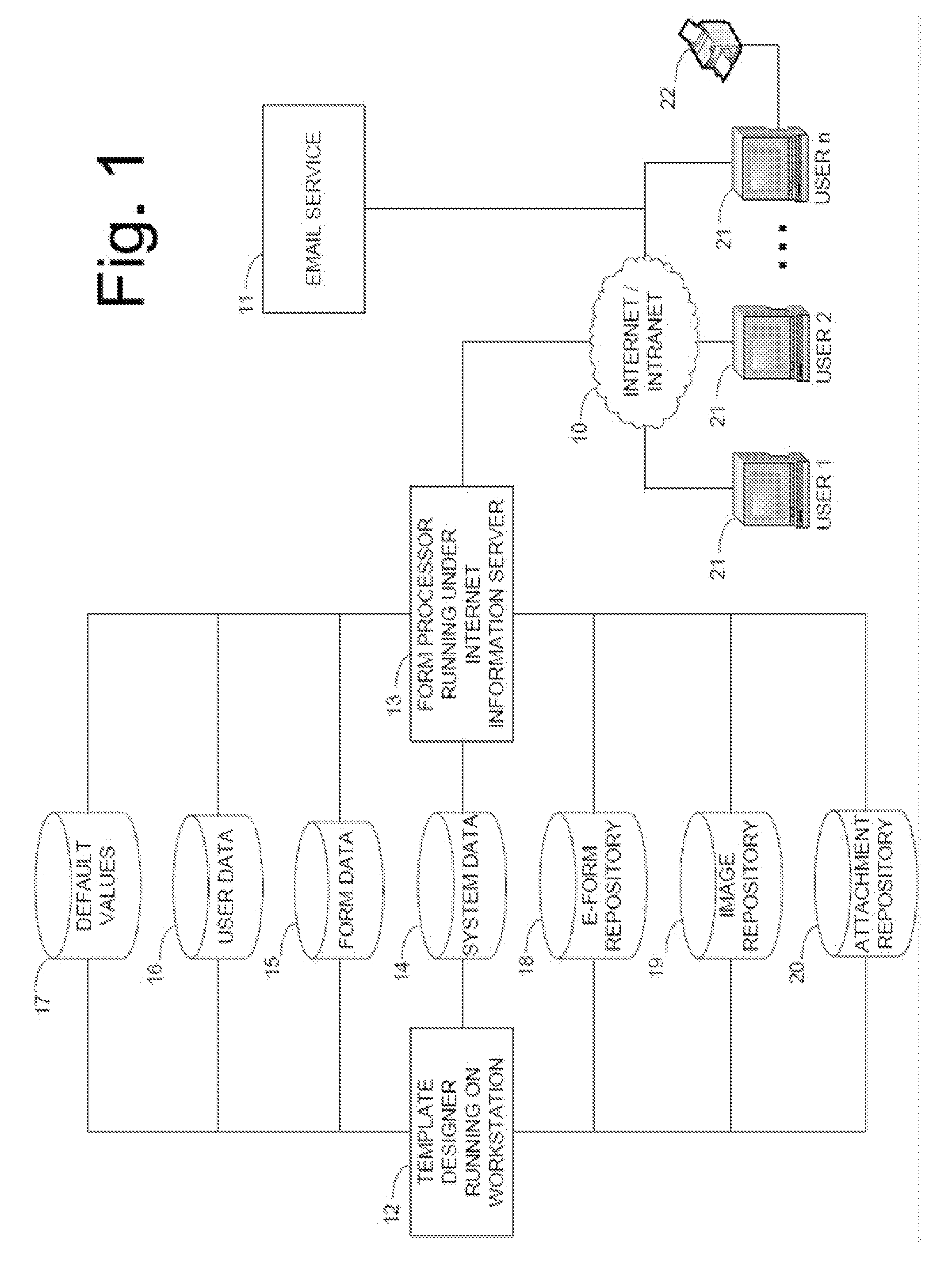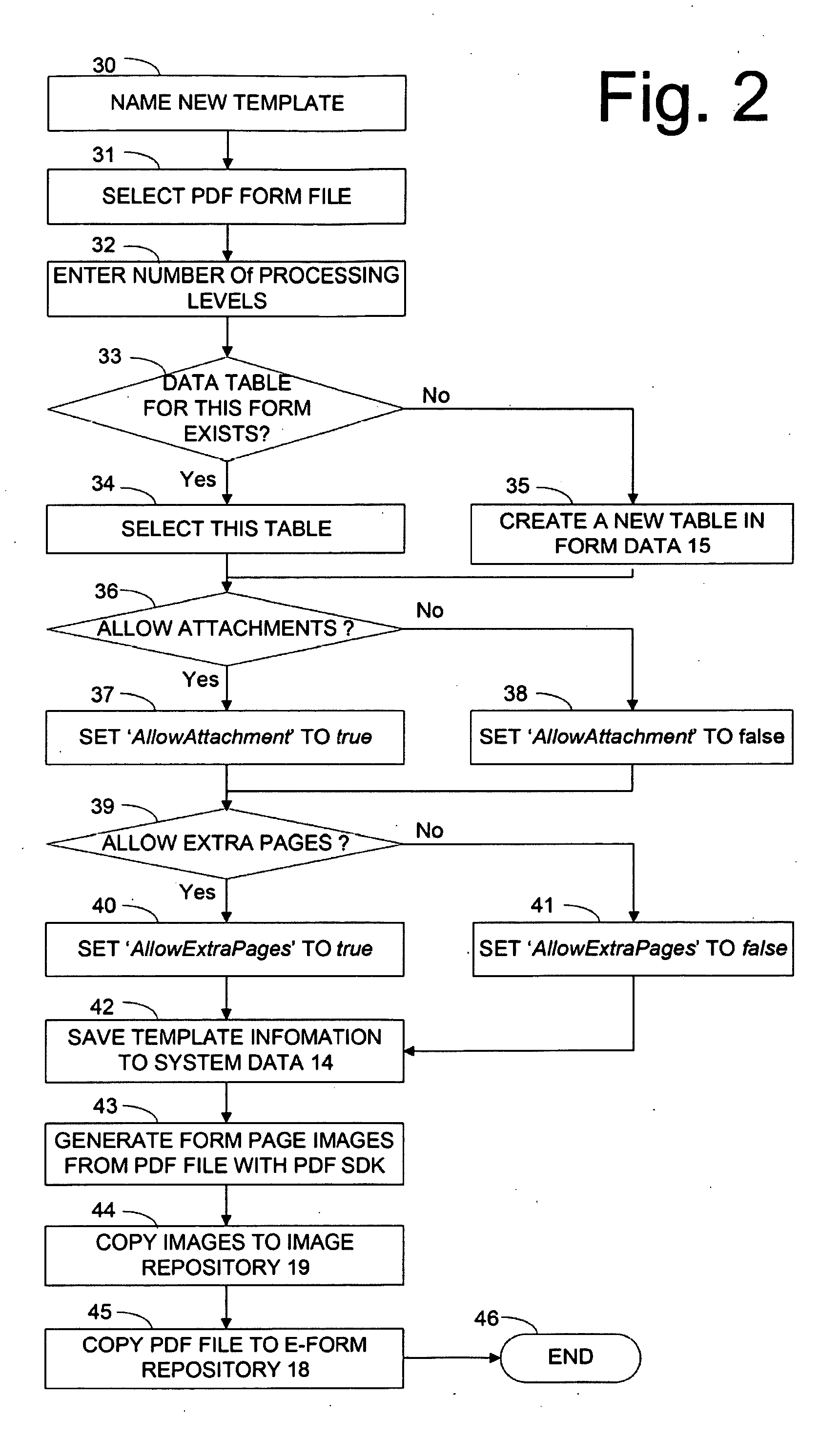Method and System for Processing Fixed Format Forms Online
a fixed format and online processing technology, applied in the field of processing forms, to achieve the effect of making the management of forms easier
- Summary
- Abstract
- Description
- Claims
- Application Information
AI Technical Summary
Benefits of technology
Problems solved by technology
Method used
Image
Examples
Embodiment Construction
[0060]The invention disclosed herein describes processing electronic forms (e-forms) such as, for example, PDF forms online, and handling complicated dynamic workflow. It will be appreciated that the invention significantly improve many aspects of forms processing disclosed in the prior art. It will be understood that dynamic data fields or objects are fields described herein correspond to static data fields represented in the online e-form or fixed format form. It will be understood that static data fields are those fields on a form, online or otherwise, often referred to as form fields and are the blank areas where data is usually entered or represented. Further, it will be understood that the dynamic data field objects generated herein may be assigned suitable control properties, security parameters, workflow parameters, and location coordinates corresponding to a static data filed represented in the online form. It will also be understood that object, in modern computer science,...
PUM
 Login to View More
Login to View More Abstract
Description
Claims
Application Information
 Login to View More
Login to View More - R&D
- Intellectual Property
- Life Sciences
- Materials
- Tech Scout
- Unparalleled Data Quality
- Higher Quality Content
- 60% Fewer Hallucinations
Browse by: Latest US Patents, China's latest patents, Technical Efficacy Thesaurus, Application Domain, Technology Topic, Popular Technical Reports.
© 2025 PatSnap. All rights reserved.Legal|Privacy policy|Modern Slavery Act Transparency Statement|Sitemap|About US| Contact US: help@patsnap.com



